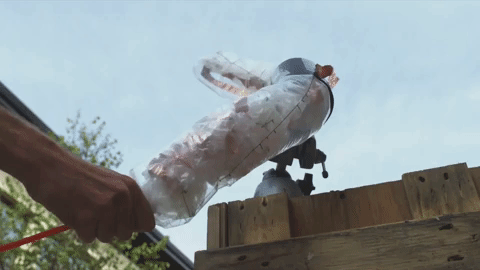Inflatable, Vine-like Robot Can Do It All
Posted on Categories Discover Magazine

A new soft robot grows like a creeping vine to weave its way around obstacles and nose into tiny spaces.
From researchers at Stanford University, the robot consists mostly of an inflatable tube that’s been folded in on itself and coiled up. To move, a pneumatic pump fills the tube with air, pushing it forward by drawing material from the inside. In initial tests, the robot stretched as far as 72 meters from an initial length of 28 centimeters and reached speeds of over 20 mph.
Grow Robot, Grow
The researchers put their expanding tube-bot through a series of tests, scrunching it through tiny cracks, spiraling it into the air to serve as an antenna, moving it through a bed of nails, using it to lift a heavy box and maneuvering it through a tight space to douse a fire with water held inside. They’ve figured out how to control its movements by inflating each side independently — stretch out the right side and the robot turns left, and vice versa.
Key to its movements is the fact that it doesn’t slide across the surfaces it’s traversing — all of the motion happens on the inside. By extruding itself forward, the robot avoids getting caught or stuck and, if applied medically, won’t scrape across sensitive tissues in the body. Reversing the process allows the tube to simply roll itself back up.
They are designed to be mass-produced from cheap equipment, so losing or breaking one isn’t an issue. Using what is essentially just a plastic tube has other benefits as well.
“It can have a power supply that doesn’t need to to move, it can just stay stationary unlike a locomoting robot. That give us a lot more flexibility in terms of weight as we move through our environments,” says Laura Blumenschein, a graduate student and co-author of the paper in a video.
It’s also able to carry things along with it, like a camera for exploring hidden spaces, an antenna and wires and even water. This holds promise for medical applications of the robot, which could be used as a catheter, or to deliver devices inside the body. In the paper published Wednesday in Science Robotics, the researchers say that they’ve already created a version of the robot as small as 1.8 mm across.
They hope to further refine their ability to model the robot’s movements, as well as develop an industrial process to make them — the current designs were all made by hand. Future versions could be made of more durable materials and filled with fluid instead of air, granting greater strength and speed.